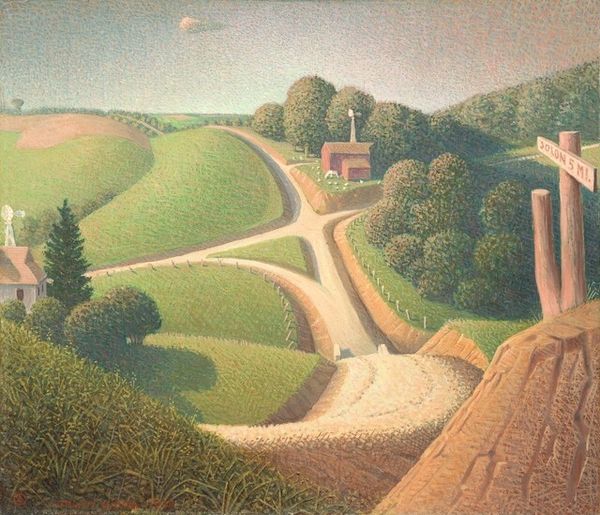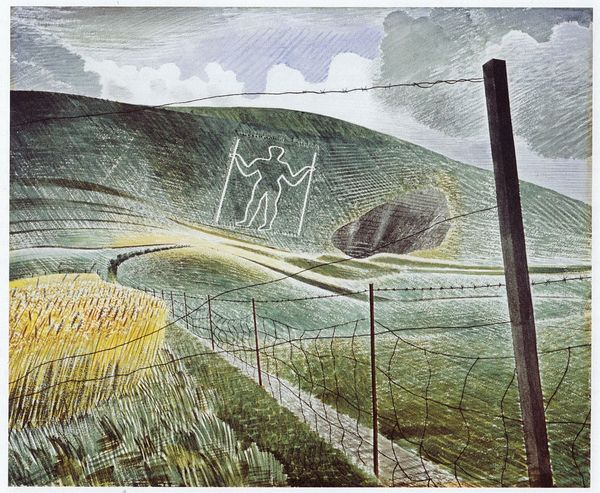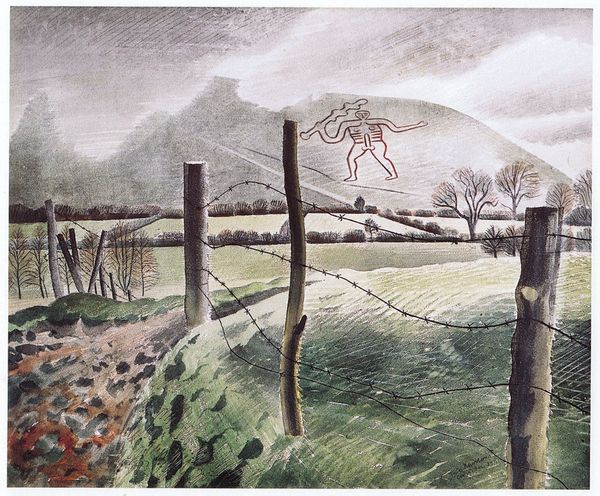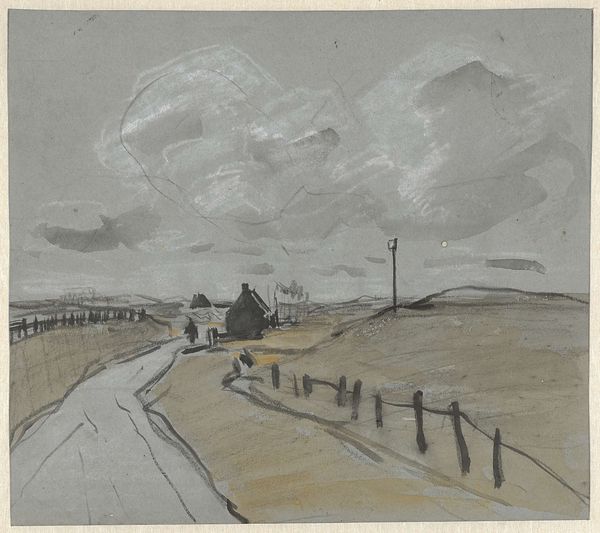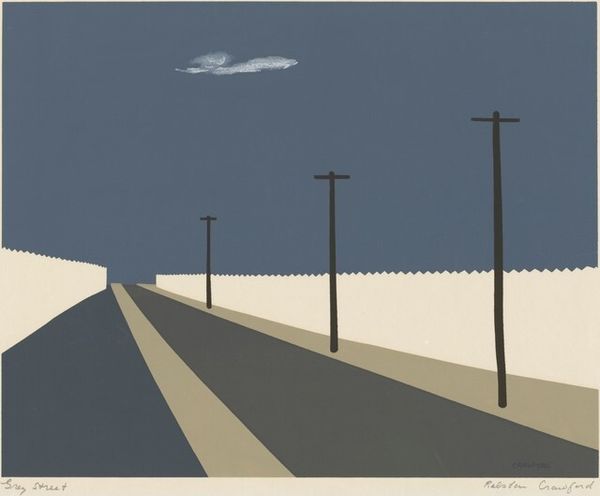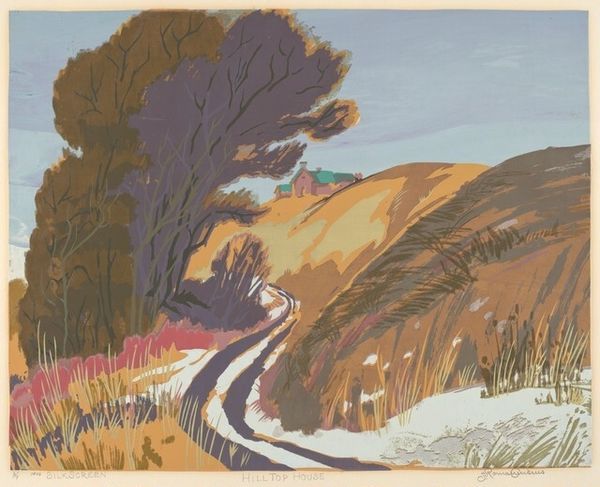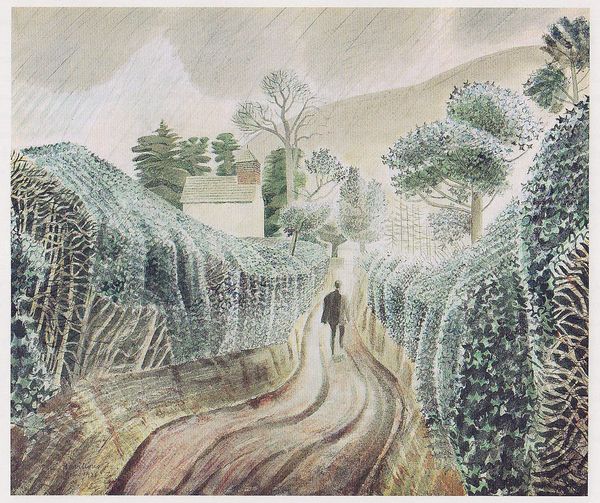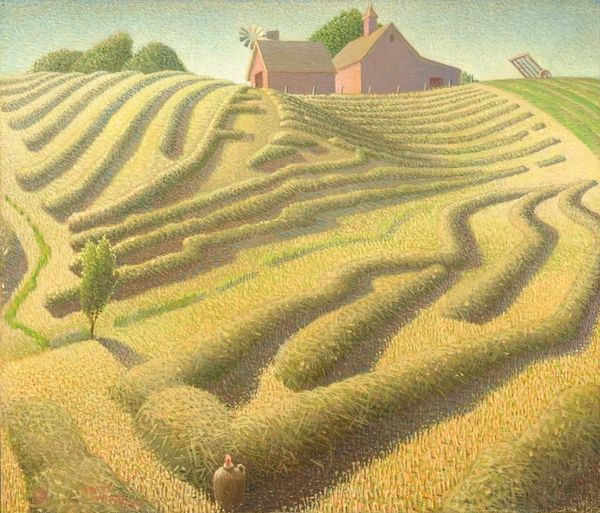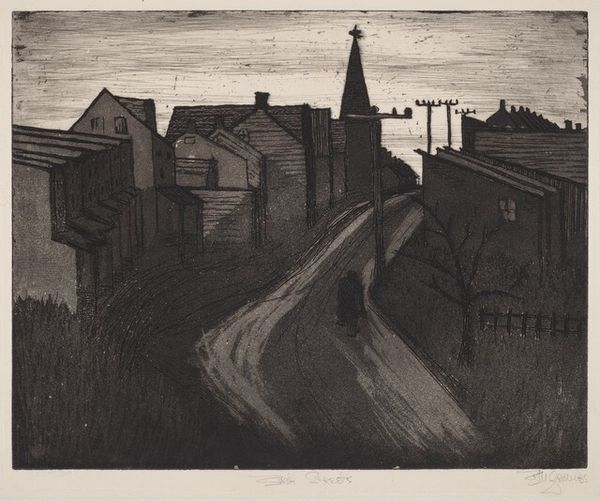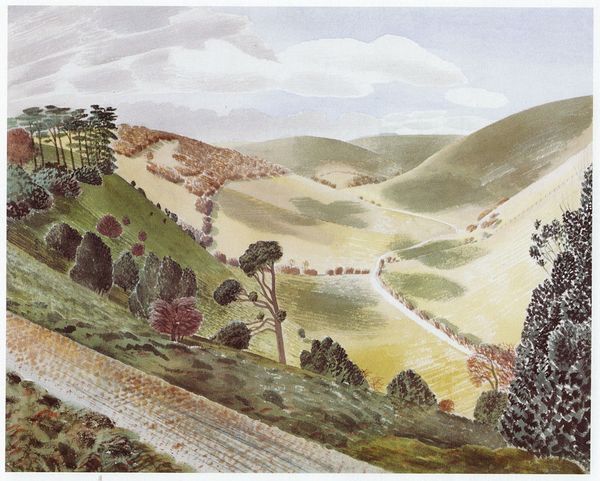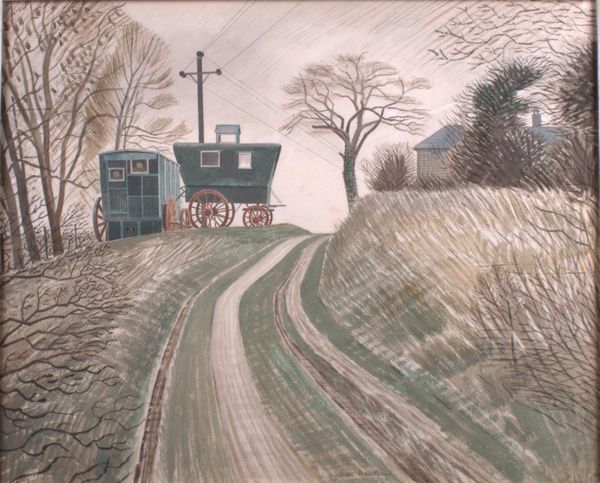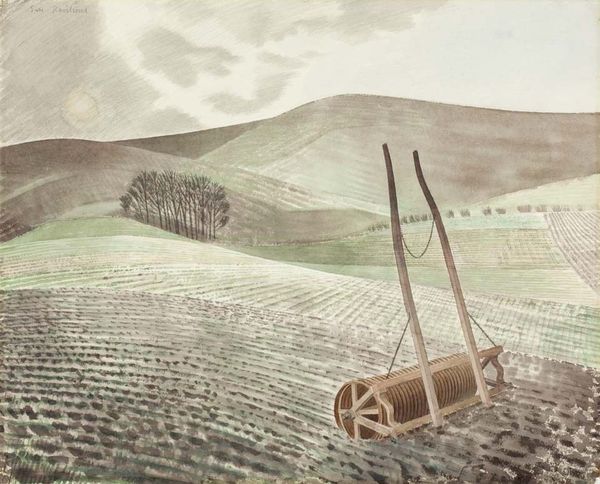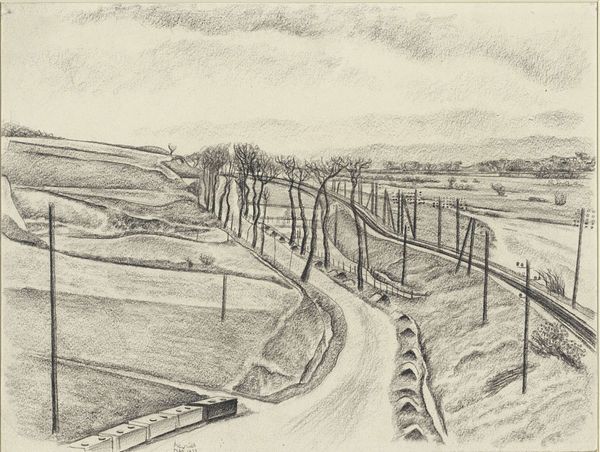
plein-air, watercolor
#
plein-air
#
landscape
#
oil painting
#
watercolor
#
road
#
line
#
watercolour illustration
#
modernism
#
watercolor
Copyright: Public domain
Curator: Eric Ravilious painted this watercolor, "Wiltshire Landscape," in 1938. It presents a road cutting through rolling hills, with a small vehicle parked on the left and a line of telegraph poles marching into the distance. What's your initial take? Editor: Stark, wouldn’t you say? There's a rather linear, almost diagrammatic feel to the composition. It looks like the land has been mapped out, each patch a certain texture of field. And those telegraph poles are placed quite strategically... Curator: Indeed. Considering Ravilious's career within the context of interwar Britain, the imagery of a clearly ordered landscape is rather loaded. The imposition of human infrastructure —the road, the car, the utility poles— over the rural feels deliberate. Editor: The stark utilitarianism of those elements jumps out at me, in counterpoint to the gentle swells of the fields. The artist seems quite concerned with conveying both the sheer industry involved in making land useful, alongside this quiet beauty. Even the medium – watercolor – seems apt given how traditionally it has been used in industrial applications: for botanical illustrations or building renderings. Curator: Precisely! This intersects with the broader narrative of 1930s Britain, poised between agricultural tradition and encroaching industrialisation. Ravilious, in a way, uses this tension to explore ideas of national identity. Think about who gets access to that road and that car during this era, how such innovations changed life, but also were reflective of profound class divides. Editor: I agree. Even the way the fields are treated– those short hatch marks which almost turn the land itself into raw material to be printed onto some industrial fabric - makes me see those fields more like manufactured goods, commodities, and less about an unspoiled countryside. Curator: Right. And Ravilious's style, the line work and calculated composition, moves this beyond mere pastoral scene into a potent commentary. His modernist aesthetic frames the landscape as inherently impacted by human activity and by the rising forces of capitalist production. Editor: Well put. It strikes me that this quiet watercolour encapsulates the very contradictions and negotiations of a society confronting its future. Ravilious uses the conventions of landscape painting to unearth underlying social stratifications. Curator: And in doing so, gives us insight into the processes and the cultural norms we’ve come to associate with both land and art, to this day. Thanks for helping to parse this landscape beyond its immediate pictorial value. Editor: The pleasure's all mine. I look forward to discussing the next piece.
Comments
No comments
Be the first to comment and join the conversation on the ultimate creative platform.
